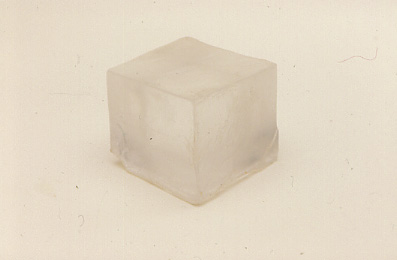 
Chemistry: Matter and ChangeChapter 8:
Ionic CompoundsProblem of the Week <a onClick="window.open('/olcweb/cgi/pluginpop.cgi?it=gif::::/sites/dl/free/0078664187/179001/ch08_chapter.gif','popWin', 'width=NaN,height=NaN,resizable,scrollbars');" href="#"><img valign="absmiddle" height="16" width="16" border="0" src="/olcweb/styles/shared/linkicons/image.gif"> (0.0K)</a> <a onClick="window.open('/olcweb/cgi/pluginpop.cgi?it=gif::::/sites/dl/free/0078664187/179001/ch08_chapter.gif','popWin', 'width=NaN,height=NaN,resizable,scrollbars');" href="#"><img valign="absmiddle" height="16" width="16" border="0" src="/olcweb/styles/shared/linkicons/image.gif"> (0.0K)</a> | Minerals
Minerals are naturally occurring, inorganic crystalline solids that have a specific chemical composition. Minerals are the building blocks of rocks and many minerals
are essential to plant and animal life. The science of mineralogy studies minerals that make up rocks, clays, soils, and sands of Earth, as well as, meteorites and other extraterrestrial
rocks. |  <a onClick="window.open('/olcweb/cgi/pluginpop.cgi?it=jpg::::/sites/dl/free/0078664187/179001/ch8_1.jpg','popWin', 'width=NaN,height=NaN,resizable,scrollbars');" href="#"><img valign="absmiddle" height="16" width="16" border="0" src="/olcweb/styles/shared/linkicons/image.gif"> (20.0K)</a> <a onClick="window.open('/olcweb/cgi/pluginpop.cgi?it=jpg::::/sites/dl/free/0078664187/179001/ch8_1.jpg','popWin', 'width=NaN,height=NaN,resizable,scrollbars');" href="#"><img valign="absmiddle" height="16" width="16" border="0" src="/olcweb/styles/shared/linkicons/image.gif"> (20.0K)</a> | Minerals have highly-ordered three dimensional internal arrangements of atoms or ions. Thus, minerals are crystalline solids. Crystals are built up by the repetition of a unit structure
such as a cube or a hexagon. See Table 1 below for three minerals whose structural unit is the cube. Table 1
Mineral Comparison | Mineral | Cation | Anion | Melting point (ºC) | Hardness | Anion-cation distance (nm) | | Halite | Na+ | Cl- | 801 | 2.5 | 281 | | Sylvite | K | Cl- | 771 | 2.0 | 315 | | Fluorite | Ca2+ | F- | 1418 | 4.5 | 236 |
Note the anions and cations in each mineral in Table 1. These oppositely charged ions are held by ionic bonds to form crystals. The strength of the bonds within a crystal is responsible
for the crystal’s physical properties: solubility, hardness, melting point, and lack of conductivity of heat and electricity. Bond strength is determined by the spacing between the ions
and the amount of charge on the ions. | The chemical formula of an ionic crystal is determined by the ratio of the cations and anions that make up the crystal. In addition, the radii of the ions determine the arrangement
of ions in the crystal. Ions of different elements can substitute for one another in a crystal if their sizes are similar. Therefore, most minerals are not pure substances. Often, mineral
colors result from minute traces of transition elements (Ti, V, Cr, Mn, Fe, Co, Ni, Cu) called chromophores. Rubies and sapphires have the same chemical composition, Al2O3, as the mineral corundum. The difference in color is due to the chromophore chromium in rubies and
the chromophores titanium and iron in sapphires. |  <a onClick="window.open('/olcweb/cgi/pluginpop.cgi?it=gif::::/sites/dl/free/0078664187/179001/POWproblem_1.gif','popWin', 'width=NaN,height=NaN,resizable,scrollbars');" href="#"><img valign="absmiddle" height="16" width="16" border="0" src="/olcweb/styles/shared/linkicons/image.gif"> (0.0K)</a> <a onClick="window.open('/olcweb/cgi/pluginpop.cgi?it=gif::::/sites/dl/free/0078664187/179001/POWproblem_1.gif','popWin', 'width=NaN,height=NaN,resizable,scrollbars');" href="#"><img valign="absmiddle" height="16" width="16" border="0" src="/olcweb/styles/shared/linkicons/image.gif"> (0.0K)</a> | Determine the correct chemical formula and chemical name for each crystal. a. galena, composed of lead(II) ions and sulfide ions
b. hematite, composed of iron (III) ions and oxide ions
c. aragonite, composed of calcium ions and carbonate ions
d. barite, composed of barium ions and sulfate ions | | | |  <a onClick="window.open('/olcweb/cgi/pluginpop.cgi?it=gif::::/sites/dl/free/0078664187/179001/POWproblem_2.gif','popWin', 'width=NaN,height=NaN,resizable,scrollbars');" href="#"><img valign="absmiddle" height="16" width="16" border="0" src="/olcweb/styles/shared/linkicons/image.gif"> (0.0K)</a> <a onClick="window.open('/olcweb/cgi/pluginpop.cgi?it=gif::::/sites/dl/free/0078664187/179001/POWproblem_2.gif','popWin', 'width=NaN,height=NaN,resizable,scrollbars');" href="#"><img valign="absmiddle" height="16" width="16" border="0" src="/olcweb/styles/shared/linkicons/image.gif"> (0.0K)</a> | Examine the properties of halite, sylvite, and fluorite listed in Table 1. Explain the trends you observe. |  <a onClick="window.open('/olcweb/cgi/pluginpop.cgi?it=gif::::/sites/dl/free/0078664187/179001/webLinks.gif','popWin', 'width=NaN,height=NaN,resizable,scrollbars');" href="#"><img valign="absmiddle" height="16" width="16" border="0" src="/olcweb/styles/shared/linkicons/image.gif"> (1.0K)</a> <a onClick="window.open('/olcweb/cgi/pluginpop.cgi?it=gif::::/sites/dl/free/0078664187/179001/webLinks.gif','popWin', 'width=NaN,height=NaN,resizable,scrollbars');" href="#"><img valign="absmiddle" height="16" width="16" border="0" src="/olcweb/styles/shared/linkicons/image.gif"> (1.0K)</a> | Useful Web Sites:
Colgate Mineralogy
Covalent
Crystals
Halite | |
 |  |
|





